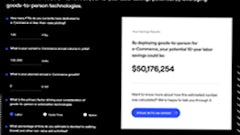Walk into any liquor store or the beer and wine department of any chain store and you will find stacks of beverage cases with a case card stuck in the top. It's that splashy point-of-sale "riser card" advertisement that catches your eye and draws you into an impulse purchase. Short-lived and disposable, yes, but cheap? Not if you're buying 500,000 of them every year, and not if you're paying an ad agency to procure them for you.
That's the situation that Robert Santoli found when he was head of New York-based U.S. procurement at InBev, the $11 billion global alcohol beverage corporation that markets more than 200 brands around the world. One of Santoli's initial focuses upon taking his position at InBev was on the company's indirect commercial spend, in particular, agency contracts and how the company's point-of-sale materials were being managed and produced.
Upon performing an in-depth spend analysis of this category, Santoli learned, first, that the company was paying $2.5 million a year to an agency just to manage this spend. Santoli did the math and figured that, with six people at InBev, he could do the same work the agency was doing with 15 people. So he wrote a proposal to set up an internal department to handle this spend, won approval for the project at the highest level within the company, and, in short order, was setting up the infrastructure of the new group. Cost savings: the $2.5 million annual management fee was reduced to a $750,000 internal budget.
Next up, Santoli began looking at the actual spend itself. The case cards soon drew his attention. "Looking over the agency's records," he says, "I saw that we did 10,000 here, 30,000 there, and 20,000 here and 2,500 there. For all the different brands combined there was something like half-a-million of these case cards a year." Not surprisingly, each brand seemed to use a different size for their cards. "I went around to the brand managers and asked them whether there was really any reason why a particular size was used, and they all said 'that's just the way the agency creates them,'" Santoli says.
With the agency out of the picture, Santoli was able to win agreement among the different brands to standardize on a 16-inch case card. He then went into discussions with various major printers in the New York and Connecticut area, offering to guarantee them 500,000 of the case cards over an 18-month period (leaving himself a margin of error, knowing that the company typically did half-a-million of the cards a year) at a set unit price within certain parameters, such as six colors plus varnish, with a minimum quantity run. Resultant cost savings: the average unit price went from $2.03 to $0.91, plus the soft cost savings of lower overhead. "Doing the standard pricing really reduced the administration," Santoli says. "A purchase order gets done in 15 seconds, with no bidding."
Altogether this one initiative yielded more than $2 million in savings within just a couple months. Santoli has since left InBev and brought his 20 years of experience as a corporate-side procurement executive to bear in his own consulting group. At Procurement Analytics, Santoli offers services around cost reduction strategies for such categories as agency agreements, the management and production of point-of-sale materials, media, and shipping and fulfillment spends. But he continues to believe that procurement departments at a broad range of companies are missing out on the substantial quick-hit savings to be had by attacking seemingly mundane, unglamorous categories. All that is lacking is a procurement executive with the foresight and experience to go after these savings. "There's a treasure trove of money out there," he says. "But you really have to know where to look."


























